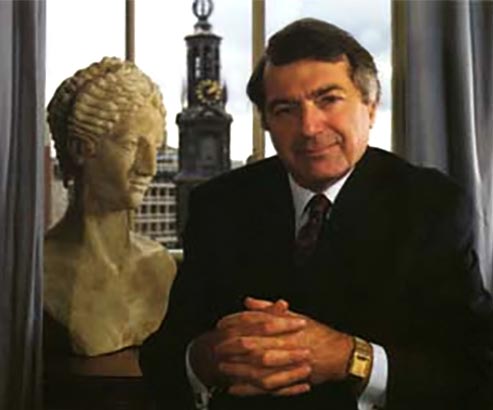Gaiacorp was unique in that it never traded listed currency options or listed currency futures, which are basically commodity contracts. Everything was done in the so-called OTC (“over-the -counter”) market, which in practice, meant dealing with the small number of large international banks that make markets in any currency pair or currency option, including cross trades that are not dollar-based, and at any price levels for options. Most of these are based in London, and it was naturally there that Gaiacorp established its head office.
The reason for Gaiacorp’s different profile was undoubtedly the unusual background of the initiator, Dr. Ross Jackson. He was North American-educated but European-based and looked at currencies from a more global perspective than his colleagues across the ocean. Many of his clients were Sterling or Danish krone-based, and they needed tools that looked at the market from their particular perspective. Prior to his research on the foreign exchange market in the early 1980s, Ross had been a consultant in international investment to a number of European financial institutions, advising on the portfolio approach to investment in shares and bonds. But he also had a background in options from his Ph.D. thesis back in 1964.
Being an Operations Researcher, once he set his mind to it, his approach was to do a very thorough two-year research study first, consider unorthodox possibilities, and ultimately find the optimal way to trade currencies. He concluded his study with the ultimate test by trading in the market with his own money for two years in 1984-1986. His studies resulted in the unique Gaiacorp approach, which was an original, highly mathematical portfolio optimization of both long and short positions in a range of currencies and currency options. The basic selling point for investors was for them to diversify risk by investing 10-20% of their savings in a product that was independent of stock and bond markets and yet had an attractive expected return. It was a hard sell initially because the concept was so new. But a number of institutional clients who knew Ross personally, backed him, and many smaller private investors soon followed.
Gaiacorp had a spectacular record from 1988-1992, making front-page news in the Wall Street Journal and the International Herald Tribune, with characteristically volatile swings, mostly upwards. The head trader – Bernard Lietaer, was named the “currency trader of the year” in 1989 based on his success in using the system. The high-flying, most volatile Gaia fund once raised eyebrows by increasing 86% in a single month! At one point, Gaiacorp was rumored to be the largest buyer of currency options in the world, buying at the rate of about $2 million per day in premium outlay.
However, Gaiacorp’s funds were hurt by the EMS devaluation crisis in 1992 and lost heavily subsequently. The nature of the market shifted thereafter. Gaiacorp’s specialty of cross-currency trading became far less attractive as interest rates converged, liquidity dried up, and spreads increased, while option sellers caught on to Gaiacorp’s strategies and changed the way they priced options in a counter move. Gaiacorp had to reinvent itself. Gaiacorp recovered but never achieved the same spectacular results again. In retrospect, it was hurt by the historic one-way stock market boom of the 1990s. A good old-fashioned bear market would have made the advantages of the strategy of diversifying into currencies much more obvious. While fund performance was fairly good but not spectacular, Gaiacorp’s real-time all-client currency overlay track record (advising corporations on when to cover their currency exposure and when not to) remained the best in the world throughout the 1990s, beating neutral strategies of no cover or always cover by about 2% per annum. Most importantly for Gaia Trust, it was a financial success, contributing over $20 million to the charitable program. In 2000, Gaiacorp was sold to the Appleton Group of South Africa.




